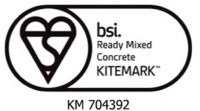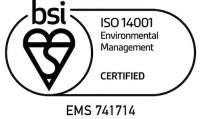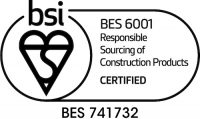To determine the suitability and workability of a batch of concrete, its stiffness or consistency can be measured using the slump test. This is a really simple test designed to determine how easily the concrete flows.
The wetness of the concrete determines its workability and suitability for different construction needs. It is sometimes easier to work with wetter mixes, especially if, for example, you need the concrete to fill an awkwardly shaped slab as the concrete will flow to fill any gaps. This type of concrete would have a high slump. A lower slump, or stiffer concrete, would be more useful for structural concrete projects, such as wall building.
The concrete slump test is very popular as it utilises an extremely simple process and unsophisticated equipment; so if you’re making your own concrete it’s an easy DIY test.
How does it work?
To complete a slump test, an inverted concrete cone is filled with wet concrete, turned upside down and tipped out – a bit like making a sand castle!
This test will show you how much water has been used to make the concrete; a lot of water makes a wetter concrete that will be more free flowing, whereas less water will make a dry concrete that will be stiff.
Equipment needed?
- A slump cone (cone-shaped metal mould)
- Metal rod (preferably steel)
- Measurement scale
How to carry out a concrete slump test?
- Before starting a new test, the inside of the slump cone should be wet. This stops friction playing a part in the slump of the concrete.
- Place the slump cone on a level and firm surface and fill it with fresh concrete in three equal layers.
- Check the concrete is properly compacted by repeatedly pushing the metal rod into the concrete after each layer.
- The cone should then be lifted off the concrete.
- A measurement of how far the concrete slumps can then be taken. Measurements are usually taken to the nearest 5mm.
The Types of Slump
When the cone is removed, the concrete will produce one of three slump shapes:
A True Slump – the concrete retains its cone shape, has a good level of cohesion, but may lack workability.
A Shear Slump – the top part of the concrete slips aside or shears off. This means the concrete mix has no cohesion.
A Collapse Slump – A complete collapse of the concrete means there is a lot of water in the concrete. This means it will have high workability.
The uses of a slump test
The slump test is one of the most effective ways of ensuring that different batches of the same concrete are all uniform. So if you need two or more batches of concrete for the same application, the slump test can ensure it is all the same. The mixer operator can also use the test to identify when a slump is too high or too low, and take the required steps to amend the batch before pouring it.
The test can also be used to determine the effect of different materials used to make the concrete. For example, a new aggregate that is slightly finer may result in a more free-flowing concrete that requires less water.
Difference in Standards
Although the slump test is used throughout the world, in lots of different tests and building codes, there are slight variations to how the test should be completed.
For example in the UK and Europe, the height of the slump cone should be 300mm, and the diameter at the bottom should be 100mm, according to BS EN 12350-2. However, the standards do not have specifications on the lifting of the cone.
In contrast, in the US, engineers use the AASHTO and ASTM standards specifications which state the cone be 12 inches high and 8 inches. The ASTM standards also specify that the cone should be vertically lifted during removal without rotating it.
EasyMix Concrete
The team at EasyMix are highly experienced and will provide the exact consistency of concrete required for your project – whether that’s a large scale commercial development, or a simply DIY garden path! We mix all concrete on site, to ensure we take into account the conditions, required quantity and any other considerations that could determine the workability of the concrete required.
To find out more, simply get in touch today. We’ll be happy to discuss your project and arrange a delivery of quality concrete, mixed to meet your exact specifications.



